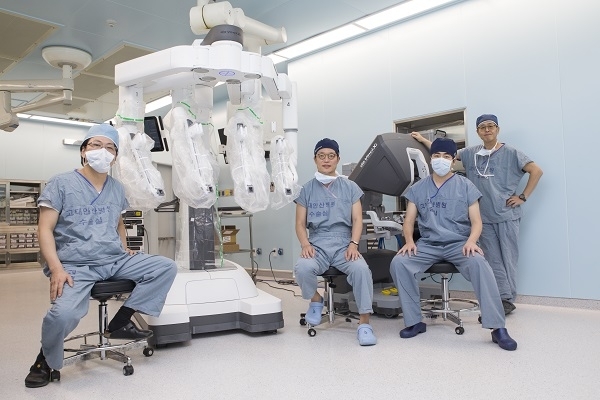With the cancer survival rate increasing, now life after treatment has become more significant. Therefore, Korea is improving the quality of life of patients by eradicating cancer through the latest cancer treatment technologies, which are proven to be safe and effective. We introduce you to the newest cancer treatment technology that is leading to the advancement of the Korean medical community. <Editor’s note>
Prostate cancer is a common type of cancer that any older male can undergo. The number of prostate cancer patients in Korea is on the rise due to population aging. According to the Ministry of Health and Welfare, the highest number of prostate cancer patients were people in their 70s (as of 2015) with 42.9% (32.3% in their 60s and 13.1% in their 80s or older).
Prostate cancer in Korea is found to be more malignant and that it rapidly progresses even in the early stages and easily metastasizes to other organs. In fact, Korean patients with a Gleason score, showing prostate cancer risk, of 7 or higher (a mid-to-high malignancy, out of ten) were 59%, which is higher than Japan (56%) and the U.S. (44%)
Therefore, early diagnosis of prostate cancer in Korea is particularly crucial. However, there is a controversy in the medical community on prostate cancer overdiagnosis and treatment due to the blind spots of each test method.
First of all, prostate-specific antigen(PSA; used for measuring prostate cancer-specific protein content through the blood), currently known as the most accurate early diagnosis method, may show increased levels if benign prostatic hyperplasia or prostatitis are severe and also show decreased levels due to the effects of medication in patients with benign prostate hypertrophy.
In a biopsy, the large prostate can cause small cancer to be left untracked, and there is not only pain but also the infection risk by E. coli in a prostate stimulation or transrectal sonography. This has led to arguments for selectively diagnosing high-risk groups.

Professor Jae-young Park, of the department of urology of the Korea University Ansan Hospital, developed a calculator that can accurately predict high-risk prostate cancer for Koreans in 2017. In combination with PSA tests, it minimized overdiagnosis and overtreatment. According to Prof. Park, the calculator can select patients who need biopsy by examining six risk factors and then detect and treat only clinically significant cancers.
The Korea University Ansan Hospital considers optimal treatment not only in diagnosis but also in the course of treatment. Prostate cancer is categorized based on the risks, and if the risk is low, only PSA tests are conducted every three months. Patients with underlying diseases who are unsuitable for anesthesia or operations are usually recommended radiotherapy and patients with progressive or high-risk prostate cancer receive complex treatments including surgery, radiotherapy, and hormone suppression therapy.
"Some hospitals recommend surgery regardless of the severity of the disease, but our hospitals are implementing the most appropriate treatment for patients based on the latest medical guidelines that take into account the life expectancy and general condition," said Professor Park Jae Young.
While in operation, robotic surgery is performed to minimize complications such as urinary incontinence and erectile dysfunction. "In the case of prostate cancer surgery, it is important to connect bladder and urethra well after nerve-sparing of sphincter and erection and entire prostatectomy, and Robot surgery can perform an operation with surgical precision and 10 times more magnified vision, and bring quick recovery due to a small incision," Professor Park Jae-Young explained. "Most of all, robotic surgery is optimized for prostate surgery, locating deep in the pelvis, and lately, the operation is becoming common enough to have robots perform more than half of prostate cancer surgery," he added. "If surgery is necessary, getting it done immediately will help the quality of life in the future."


